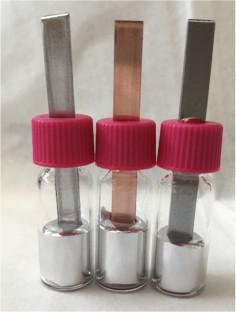International Journal of Thermophysics ( IF 2.2 ) Pub Date : 2023-12-18 , DOI: 10.1007/s10765-023-03295-y Matthias H. Buschmann

|
Europe has set itself the goal of reducing net greenhouse gas emissions to zero by 2050. This requires innovative concepts for the transfer of thermal energy. One of these could be the use of liquid metals and alloys as heat carriers. For this purpose, the precise knowledge of the thermophysical properties of these materials is of great importance. This study therefore aims to model the temperature dependent density of solid and liquid near-eutectic gallium-indium-tin alloys. Three approaches—weighted fitting of experimental data, modelling based on atomic volumes of alloying elements, and an approach that accounts for possible excess density—are utilised. Details of these strategies with respect to the thermophysical properties of the alloying elements, and the binary sub-alloys, are discussed. The resulting correlations are validated using six independent experimental data sets. The study concludes that, currently, the fitting polynomials are the most reliable models. The estimates based on atomic volumes are in close agreement with these functions. This is true for both the solid and liquid states. This marks the first time that the density of the solid state of this particular alloy has been modelled. The difficulties associated with modelling the density excess are manifold. This includes the lack of precise thermophysical properties for the alloying elements. The study paves the way for near-eutectic liquid gallium-indium-tin alloy as a heat carrier. In the view of the potential importance of heat transfer employing liquid metals, these findings highlight the need for further investigations in this field.
中文翻译:

预测固体和液体近共晶 Ga-In-Sn 合金的密度
欧洲设定了到 2050 年将温室气体净排放量降至零的目标。这需要热能转移的创新概念。其中之一可能是使用液态金属和合金作为热载体。为此,准确了解这些材料的热物理性质非常重要。因此,本研究旨在模拟固体和液体近共晶镓铟锡合金的温度相关密度。采用了三种方法:实验数据的加权拟合、基于合金元素原子体积的建模以及考虑可能的超额密度的方法。讨论了这些关于合金元素和二元子合金的热物理性质的策略的细节。使用六个独立的实验数据集验证了所得的相关性。研究得出的结论是,目前拟合多项式是最可靠的模型。基于原子体积的估计与这些函数非常一致。对于固态和液态都是如此。这标志着首次对这种特殊合金的固态密度进行建模。与密度过剩建模相关的困难是多方面的。这包括合金元素缺乏精确的热物理性质。该研究为近共晶液态镓铟锡合金作为热载体铺平了道路。鉴于采用液态金属进行传热的潜在重要性,这些发现强调了在该领域进行进一步研究的必要性。



























 京公网安备 11010802027423号
京公网安备 11010802027423号